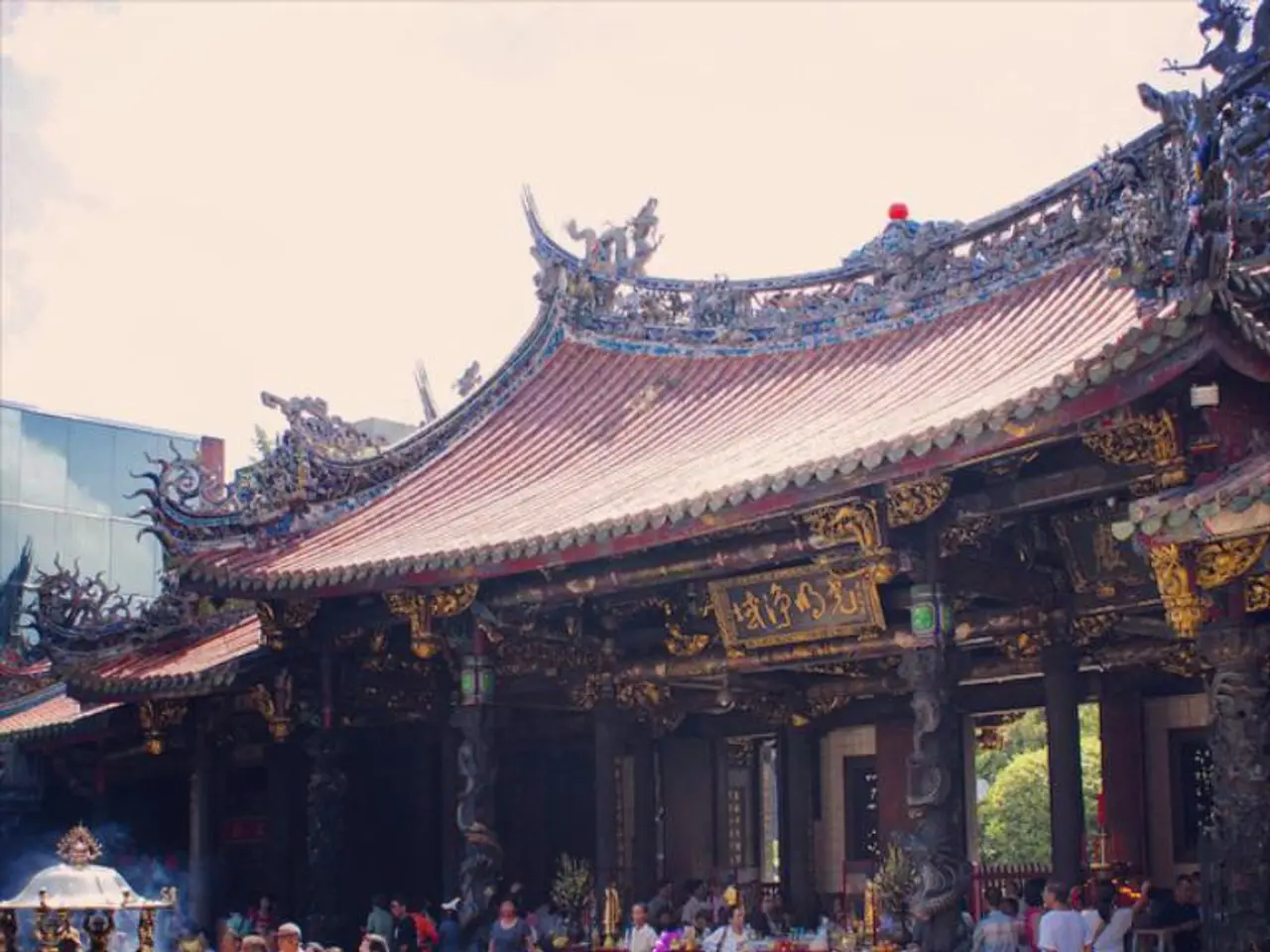Artificial Intelligence as a means to preserve the traditional Japanese kimono weaving technique known as Nishijin-ori.
In the heart of Kyoto, Japan, lies the Nishijin district, a place where the intricate weaving technique of Nishijin-ori has been practiced for over a thousand years. This ancient craft, a crucial part of Japan's cultural heritage, is now facing a challenging era due to decreasing demand for kimonos among Japanese people [1].
Hironori Fukuoka, the fourth-generation successor to a Nishijin-ori business, is determined to preserve this traditional art [2]. Recognizing the need for modernization, Fukuoka is exploring innovative ways to keep Nishijin-ori alive. One such initiative involves collaborating with Sony Labs to integrate artificial intelligence (AI) into the weaving process [5].
By using AI, Fukuoka is able to assist in pattern creation and functionality, blending traditional craftsmanship with modern technology. This fusion not only breathes new life into Nishijin-ori but also opens up opportunities for its application in creating a variety of fabric-based products [4].
Beyond kimonos, the integration of AI in Nishijin-ori could extend to fashion items other than kimonos, home decor textiles, and even tactile learning tools. The use of generative AI models also suggests future possibilities in producing textured 3D models and customized textiles, useful in fields such as interior design or specialized educational materials.
Moreover, Fukuoka is considering the use of AI to help keep Nishijin-ori alive in unexpected ways. For instance, he is exploring the potential of using AI to create durable materials for aircraft and fishing rods [3].
Nishijin-ori has gone through ups and downs throughout history, but with the integration of AI, it seems that this ancient craft is ready to face the challenges of the modern world and continue to thrive.
[1] Demand for kimonos decreasing among Japanese people. (n.d.). Retrieved from https://www.japantimes.co.jp/news/2018/03/08/national/social-issues/demand-kimonos-decreasing-japanese-people/
[2] Hironori Fukuoka: Preserving Nishijin-ori. (n.d.). Retrieved from https://www.nishijin-ori.com/en/about/
[3] Fukuoka working on using Nishijin-ori to make durable materials for aircraft and fishing rods. (n.d.). Retrieved from https://www.japantimes.co.jp/life/2019/08/26/lifestyle/fukuoka-nishijin-ori-aircraft-fishing-rods/
[4] AI and Nishijin-ori: A fusion of tradition and technology. (n.d.). Retrieved from https://www.sony.net/SonyInfo/News/Press/201908/19-080_en/
[5] Nishijin-ori and AI: A collaboration for innovation. (n.d.). Retrieved from https://www.nishijin-ori.com/en/news/2019/08/26/
The fusion of artificial intelligence with traditional Nishijin-ori techniques offers potential expansion beyond kimonos, including fashion items, home decor textiles, and even tactile learning tools. Hironori Fukuoka, the fourth-generation successor of a Nishijin-ori business, is also exploring the possibility of using AI to create durable materials for aircraft and fishing rods.




